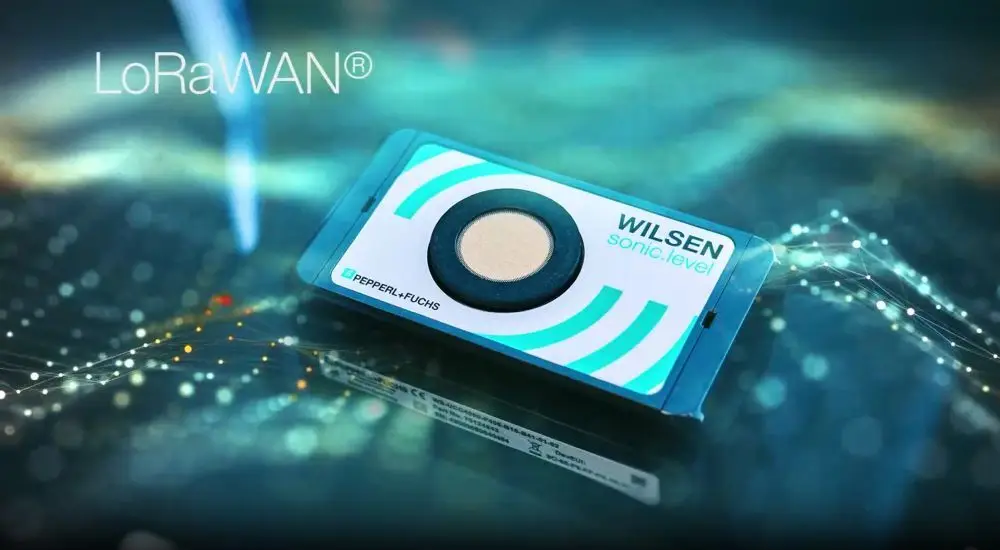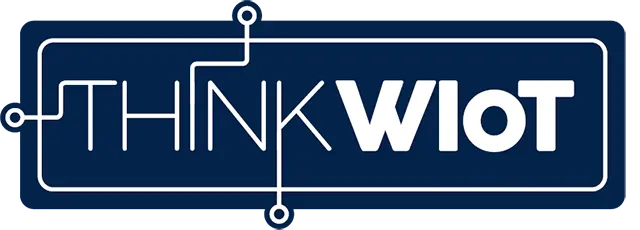LoRaWAN as the Future of Fill Level and Water Level Monitoring

Pepperl+Fuchs demonstrates how sustainable technology combines economic benefits and ecological impact with its wireless LoRaWAN ultrasonic sensor "WILSEN" (Wireless Sensor Node). Originally developed for waste management, the IoT level sensor is now also proving its worth in flood protection projects and industrial applications.
From pilot project to series production
Pepperl+Fuchs tested radio-based ultrasonic sensor technology back in 2014 as part of a smart city project in Barcelona. The experience gained there was incorporated into the development of the robust, battery-powered WILSEN, which has been used successfully in waste management since 2018.
In Heidelberg, the sensor was tested in glass containers, encapsulated in an IP66/67 housing, equipped with a PTFE-coated ultrasonic transducer, LoRaWAN wireless module, and battery unit. Today, WILSEN is an integral part of many municipal waste management solutions.
Efficiency in waste management – the example of Freiburg
The waste management and city cleaning department in Freiburg (ASF) is working with badenovaNETZE to use WILSEN to monitor the fill levels of glass containers.
The advantages:
Optimized route planning thanks to GPS data
Fewer emissions thanks to reduced trips
Prevention of overflowing containers
Integration into the "Smart Region Südbaden" real-world laboratory for the development of smart city solutions
Installation is simple: The sensor is attached to a mounting plate in the container and connected to the LoRaWAN network via a Bluetooth app. Despite adverse environmental conditions, it transmits measurement data over distances of several kilometers with very low energy consumption.
Wireless sensor technology in industry - automated empty container management
A leading international helicopter manufacturer has teamed up with Pepperl+Fuchs to implement a wireless solution for managing empty load carriers. WILSEN.sonic ultrasonic sensors detect when a defined threshold value for empty crates is reached and send the data directly to the system via LoRaWAN.
This automatically calls up a driverless transport system (AGV) that picks up the containers and provides new ones – completely without manual intervention.
Special features:
Self-sufficient battery operation with up to ten years of service life
Robust IP66/67 design for industrial environments
Easy integration into existing LoRaWAN networks
Remote configuration via downlink for flexible adjustments
The result: reduced workload for staff, trouble-free production processes, and measurable efficiency gains. Read more about this project in the article "Wireless sensor technology automates the management of empty load carriers" on Think WIOT.
Lifesavers on the river – flood protection on the Wupper
Following the devastating floods in July 2021, the Berger Group in Wuppertal developed its own flood warning system. Around 60 WILSEN sensors measure water levels along the Wupper River and its tributaries.
Special features:
Adjusted range for bridge installations
Variable transmission intervals synchronized with weather data
Integration into an AI-based prediction system developed by the IZMD (University of Wuppertal)
The goal is a scalable open-source flood warning system that can also be used in other regions.
More than just ultrasound
In addition to smart city applications, industrial companies are also discovering WILSEN. At a southern German automotive manufacturer, IBC tanks and recycling containers are being monitored—with high potential for process optimization.
Pepperl+Fuchs is continuing to develop the concept: WILSEN.valve, a battery-powered LoRaWAN sensor for valve position monitoring, will soon follow.
Conclusion
WILSEN combines robustness, energy-efficient wireless communication, and flexible application options. Whether in municipal waste disposal, flood protection, or industry, the LoRaWAN ultrasonic sensor shows how IoT technology can combine sustainability and cost-effectiveness.
Get in touch if you want to reliably monitor fill levels or levels, automate processes, or implement your IoT projects with scalable, wireless sensor technology. Daniel Möst, LoRaWAN expert at Pepperl+Fuchs, will be happy to advise you on application possibilities, integration, and project experience.

